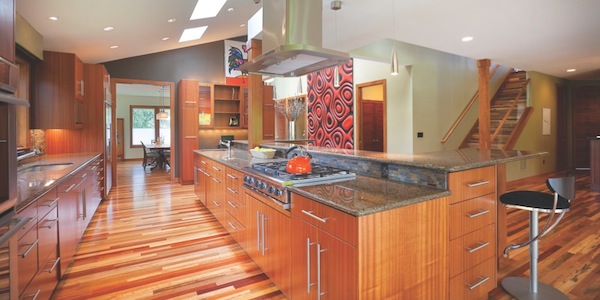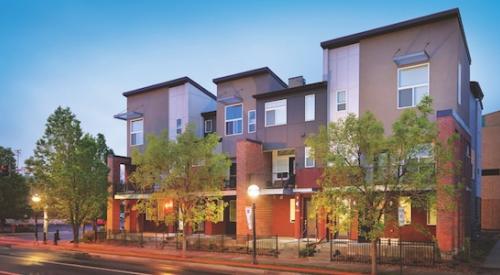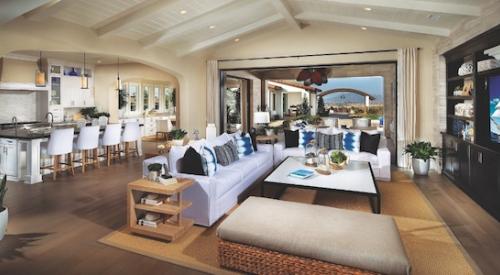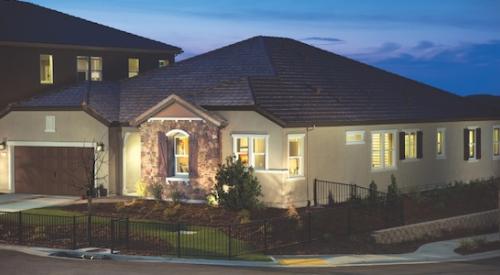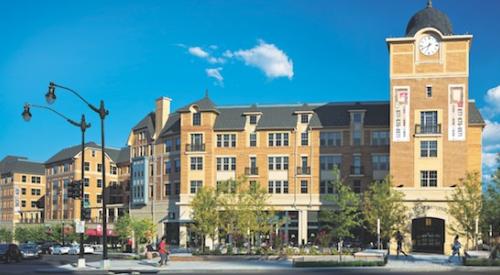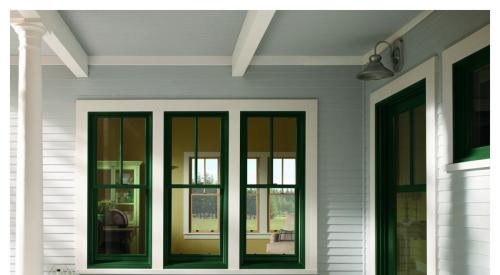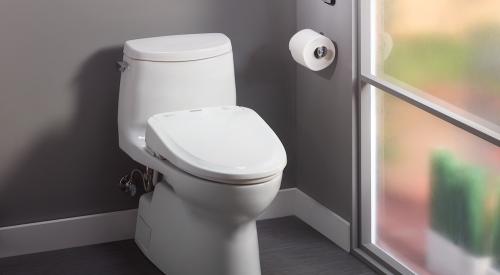One complicated aspect of building an eco-friendly home is selecting green products that fit the desired goal. The devil is in the details: What, exactly, constitutes a “green” product?
Identifying a green material depends on your idea of sustainable, and it’s largely based on how you assess products. This can (and does) lead to confusion. Things become even more difficult when you consider cases of greenwashing in the building products industry.
What makes it green?
Generally speaking, a product that helps save energy or water can be considered green. A material that doesn’t harm the environment also qualifies. The California Department of Resources Recycling and Recovery (CalRecycle) says green building materials are made from renewable sources, rather than nonrenewable, and are environmentally responsible because their impact is considered over the life of the product.
Moreover, green products include items that are made from recycled content and manufactured using a resource-efficient process. It’s ideal if they come from local or regional sources and can be reused or recycled at the end of their lives. And products that are nontoxic are also preferable.
 Kohler Dual Flush
Kohler Dual Flush
One often-overlooked characteristic of a green product is cost, says the University of Kansas School of Architecture and Urban Design. Green products should not be “significantly more costly than their counterpart conventional building materials,” the university writes. “Payback period (initial costs recouped through lower long-term operating and maintenance costs) is reasonable. Green building products will not become mainstream until they are ubiquitous in the marketplace, which will happen largely due to costs comparable to traditional counterparts.”
Still, green consultants, builders, and architects differ on how products and materials should be assessed. Some professionals, for example, prefer not to use petroleum-based vinyl building materials and products, such as siding, decking, windows, and doors, but other pros favor such products because they are often affordable, sometimes made with recycled material, and usually require little maintenance or refinishing. They also disagree on the sustainable merits of various insulation types.
Complicating matters further, a product may be safe for the environment and have been manufactured with nontoxic materials, but it may require frequent maintenance. Is it still sustainable? As noted architect Peter Pfeiffer has said, low-VOC paints or finishes make no sense if you have to repaint frequently. Is it still green? And what if a product is energy-intensive to manufacture but helps make houses energy efficient? Does it qualify? Similarly, some products that are hailed for their green benefits require the energy-intensive mining of natural resources.
Just because choosing green products requires some legwork is not a sound reason to shirk your responsibility to use them. Building a quality house involves appropriate site orientation, good design, and sound construction, but it also needs the right products to help save energy, water, and promote good indoor-air quality.
“It’s all important,” says green builder William Moore, of William T. Moore, in Austin, Texas. “If you don’t consider all the issues, you are doing it halfway.” The complicating part of the answer is that every house in every region and every sub-region has its own specific set of possibilities. “For instance, I would build high-mass walls in an arid climate with large temperature swings,” Moore explains. “I would build low-mass, highly insulated walls in a warm, humid climate. If you are using standard wood framing, then for each region there is a different way to do the vapor barrier, or you will cause the house to grow mold inside the walls.”
Energy efficiency is advancing
Manufacturers have become adept at developing cutting-edge products that make some decisions easier for builders and architects. From appliances to water heaters, air conditioners to toilets, a greater number of products are more fully formed than 10 or 15 years ago. Plus, many products now have designations or certifications from organizations such as GreenGuard, Living Building Challenge, the Department of Energy (Energy Star), Home Innovation Research Labs, and Cradle to Cradle, among others.
One area where manufacturers have made great green strides is in appliances. Though European appliance brands have long been leaders in energy efficiency, American manufacturers have caught up.
 Whirlpool HybridCare
Whirlpool HybridCare
Benton Harbor, Mich.-based Whirlpool Corp., which markets Whirlpool, KitchenAid, Maytag, Amana, and Jenn-Air, says its refrigerators are, on average, 22 percent larger and cost 75 percent less to operate than the refrigerators it built in 1970. And they use less energy than a 60-watt incandescent light bulb. “Our resource-efficient products help builders reduce the overall cost of homeownership for their customers and sell more homes,” says Bob Bergeth, general manager, builder sales at Whirlpool.
One recent Whirlpool introduction that continues the company’s energy-efficiency push is a ventless HybridCare heat pump clothes dryer that uses up to 73 percent less energy. “Compared to typical dryers that use large amounts of energy in the form of venting hot, moist air, the HybridCare dryer is a ventless heat pump dryer that uses a revolutionary refrigeration system to dry and recycle the same air,” the company says in a release announcing the product.
This June, Whirlpool also introduced a smart top-load washer and dryer pair that connects with the Nest learning thermostat. When the Nest thermostat is set to “away” during the drying cycle, the EcoBoost option is activated, taking advantage of slightly longer drying times at a lower temperature to help save energy.
This push to reduce energy use is an important part of home building today, which accounts for the focus on appliances, but there also has been an effort to improve the building envelope.
Charlotte, N.C.-based Huber Engineered Woods has upgraded the performance of its Zip System sheathing. Like the original Zip sheathing, the new product features an OSB panel covered with a resin that provides moisture protection, but it now offers a continuous layer of foam insulation that increases thermal performance and eliminates thermal bridging.
“With a built-in water-resistive barrier, Zip System sheathing eliminates the need for housewrap and reduces risk of water getting trapped between the barrier and the sheathing panel, which can save time and costly rework on the job,” the company says in a release. “Panels are taped at the seams to provide a rigid air barrier that helps reduce air leakage.”
 Huber Zip System R-Sheathing
Huber Zip System R-Sheathing
Wilmington, Del.-based DuPont Building Innovations has the same goal. The company’s Tyvek ThermaWrap R5.0 building wrap acts as a breathable air and water barrier that also provides continuous exterior insulation. The company says the product helps builders achieve higher R-value wall assemblies, which improves energy efficiency and helps to reduce the chance of water accumulation in the wall.
“This product is the only one of its kind on the market,” says Angela Strzelecki, North America business director for DuPont. “We recognized the need for a product that can be installed like a building wrap and provide builders with a level of insulation to help improve energy efficiency, and air and water protection to improve the durability of their homes.”
Radical changes
Improved double- and even triple-insulated windows are also promoting energy efficiency. A rarity about 10 years ago, triple-glaze windows are now offered by most major manufacturers, including Ply Gem, Simonton Windows, Pella Windows & Doors, Intus, Zola, and Marvin Windows and Doors, among many others. Though consultants say such windows are sometimes unnecessary for the average home, they do have a place in highly insulated houses in cold climates.
Even mundane categories, such as ceiling fans, are seeing improvements. Not long ago, Lexington, Ky.-based Big Ass Fans updated its popular Haiku fan with a new SenseME technology feature. Equipped with an onboard computer and array of sensors, the fan uses 2 to 30 watts of energy (compared with 90 to 110 watts for a typical residential ceiling fan), exceeding Energy Star requirements for cfm/W by 450 percent to 750 percent, the company claims. “In a typical year, Haiku would use about 50 [kilowatt hours], for a cost of around $5,” it says.
 Big Ass Fans Haiku with SenseME
Big Ass Fans Haiku with SenseME
Of course, energy efficiency isn’t the only goal. Today, more manufacturers are building their business models on offering products—flooring, countertops, wall paneling, etc.—that require no virgin resources at all. Two such companies are Portland, Ore.-based Viridian Reclaimed Wood and The Hudson Co., in New York. Reclaimed lumber products offer many benefits: generally higher quality wood from old-growth trees, possible LEED points for certified products, and handsome wood with patina. But proceed with caution. Some old lumber may have been treated with harsh chemicals, adhesives, or high-VOC paints. It’s a good idea to ask vendors if the products were tested for contamination.
Other brands are stepping up their use of recycled materials. Cosentino, for example, has expanded its Silestone quartz surfacing with the Eco line, a collection that includes products made from 75 percent recycled materials such as mirror, glass, porcelain, earthenware, and vitrified ash. For good measure, even 94 percent of the water used in its manufacturing process is reused, the company says.
Lack of water is an urgency
One important issue that applies to the entire country but is especially relevant for builders and residents in the West is water conservation. California is entering its fourth year of a severe drought that is unlikely to end anytime soon. But the Golden State is not alone. According to the Government Accountability Office, 40 states expect to see water shortages in at least some areas during the next decade. For this reason, many in the industry say that green products such as Water Sense faucets and ultra low-flow toilets should be standard in every house.
This is the line of reasoning that some architects and green consultants advocate: Green products should no longer even be a separate category; they should be standard, a part of everything you do. “The products we consistently specify these days are more focused on energy efficiency and high performance,” says Phil Kaplan, principal of Kaplan Thompson Architects, in Portland, Maine. “Many things we used to worry about, such as low-VOC content and low-water-usage fixtures, have started to become the norm.”
 Eco by Cosentino
Eco by Cosentino
